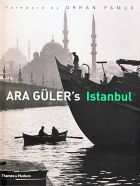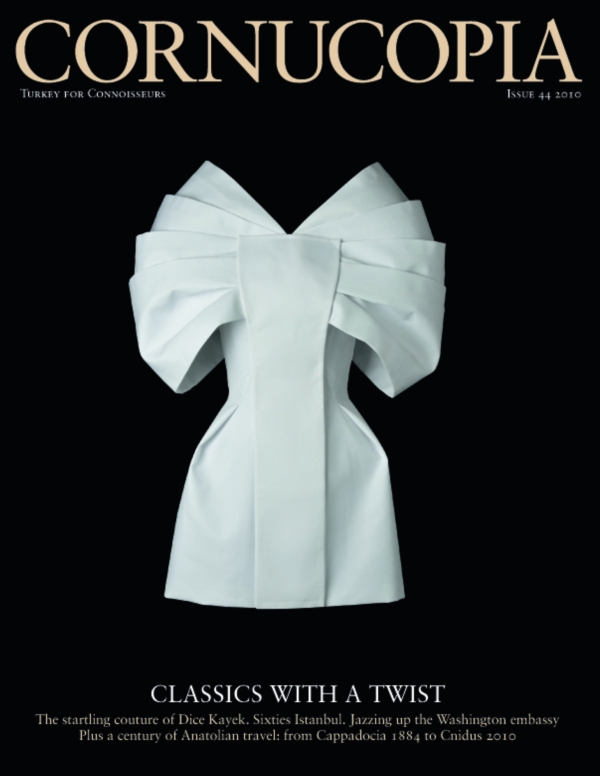Buy or gift a stand-alone digital subscription and get unlimited access to dozens of back issues for just £18.99 / $18.99 a year.
Please register at www.exacteditions.com/digital/cornucopia with your subscriber account number or contact subscriptions@cornucopia.net
Buy a digital subscription Go to the Digital EditionThe finest school of sculpture in all antiquity was in Aphrodisias. Above the valleys of the Meander in Turkey’s Aegean hinterland, this favourite city of the Emperor Augustus remained largely unknown until the photographer Ara Güler brought it to the attention of the Princeton scholar Kenan T Erim in 1959. Here Ara Güler returns to the city and John Julius Norwich recalls Professor Erim and his first impressions of the sculptures that took his breath away.
A few years before he became Emperor Augustus, Octavian the Triumvir wrote, “Aphrodisius is the only city in all Asia that I have selected to be my own.” This tremendous testimonial is carved, in exquisite Greek lettering, high on the wall of the theatre.
As I stood before it on September 3, 1984 in the early morning sun – which catches it for only an hour or so each day, just after its rising – I understood how he felt. Of all the Graeco-Roman sites of Anatolia, Aphrodisius – named after Aphrodite, goddess of love – is the most hauntingly beautiful.
It has also proved to be the most rewarding. The late Professor Kenan Erim began his excavations there in 1961; every succeeding summer for the next twenty-nine years Aphrodisius yeilded more priceless treasures than any other site in the classical world. Meanwhile he protected it with a fierce passion. Such visitors who made the journey – and the place is mercifully far off the beaten track – searched in vain for hamburger stalls or soft-drink stands; even post-cards were few. The contrast with the popular honeypots like Ephesus was as impressive as it was refreshing. Now, alas, Kenan Bey is dead, of a sudden heart attack sustained in the British Embassy at Ankara in November 1990; but his long-time friend and colleague RRR Smith, Lincoln Professor of Classical Archaeology and Art at Oxford, is carrying on his work, and Aphrodisias retains its old magic.
But what, you may ask, is the source of that magic? Beauty and isolation cannot be the whole story. What made Aphrodisias so special? First of all, for the ancient world, there was its sheer opulene: the sumptuousness of its public and private buildings, the splendour of its theatre, the immensity of its 30,000-seat stadium. Their unswerving loyalty to Augustus and his successors had earned its citizens immunity from imperial taxation. Second, there was the reputation of the city itself, both as a cultural and intellectual centre, and as a place of religious pilgrimage…
High on the central Anatolian plateau, the craggy undulations of Cappadocia’s volcanic landscape conceal a silent world: countless Byzantine sancturies and cathedrals lovingly hollowed from the rock. David Barchard finds two valleys undisturbed since the Dark Ages. Photographs by Sigurd Kranendonk
Amasya, Tokat and Merzifon were once on the trade routes to China, centres of scholarship and commerce. Today they are secluded enclaves of traditional pleasures. John Carswell enjoys a feast of delicate architecture and heady wines. Photographs by Simon Upton
Hidden among the concrete blocks of Teşvikiye is a magnificent mansion riddled with mystery. Masquerading as a Venetian palazzo, Tozan House has disappearing passages, secret stairs and eccentricities it shares with its creator
When Mike Read, the plant conservation officer for Fauna and Flora International (FFI), uncovered a large illegal trade in wild bulbs from Turkey in the 1980s, he and his colleagues were greatly concerned…
The Mosque of Esrefoğlu in Beyşehır, is one of the most beautiful in Anatolia. Built in 1298, it recalls earlier Central Asian traditions. Wooden columns with carved capitals support the splendid roof.
Tracing the history of this beautiful fruit is like reading a fairy tale. It spans continents and cultures like no other fruit, from its presumed natural habitat in the foothills of the Himalayas to the scented paradise gardens of the eastern Mediterranean and the orange groves of California.
More cookery features
The bunch of Narince grapes Ali Riza Diren is holding in his Anatolian vineyard (illustrated in this vintage issue of Cornucopia) is the raw material of a well kept secret. Tokat’s is an ancient wine, and its production was revived by Ali Riza’s father, to the delight of ambassadors and the approval of a Sotheby’s connoisseur.
















Cornucopia works in partnership with the digital publishing platform Exact Editions to offer individual and institutional subscribers unlimited access to a searchable archive of fascinating back issues and every newly published issue. The digital edition of Cornucopia is available cross-platform on web, iOS and Android and offers a comprehensive search function, allowing the title’s cultural content to be delved into at the touch of a button.
Digital Subscription: £18.99 / $18.99 (1 year)
Subscribe now